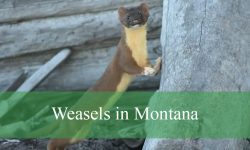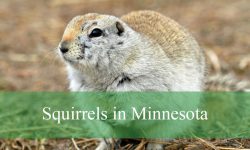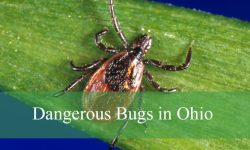Squirrels are a familiar and lively part of Ohio’s natural landscape. With several different species found across the state, from forest floors to suburban trees, squirrels in Ohio are active year-round and easily observed in a variety of environments. Each species brings its own unique traits, behaviors, and ecological roles.
From tree-dwelling acrobatics to underground burrows, these squirrels have adapted to many of Ohio’s habitats. Some glide silently through the night, while others chatter noisily during the day. Their wide distribution and distinct appearances make them a favorite among wildlife watchers and nature enthusiasts alike.
In this article, we explore the most common types of squirrels in Ohio. You’ll learn how to recognize them, understand their habits, and discover where they live throughout the state.
Common Squirrels Found in Ohio
Eastern Gray Squirrel (Sciurus carolinensis)
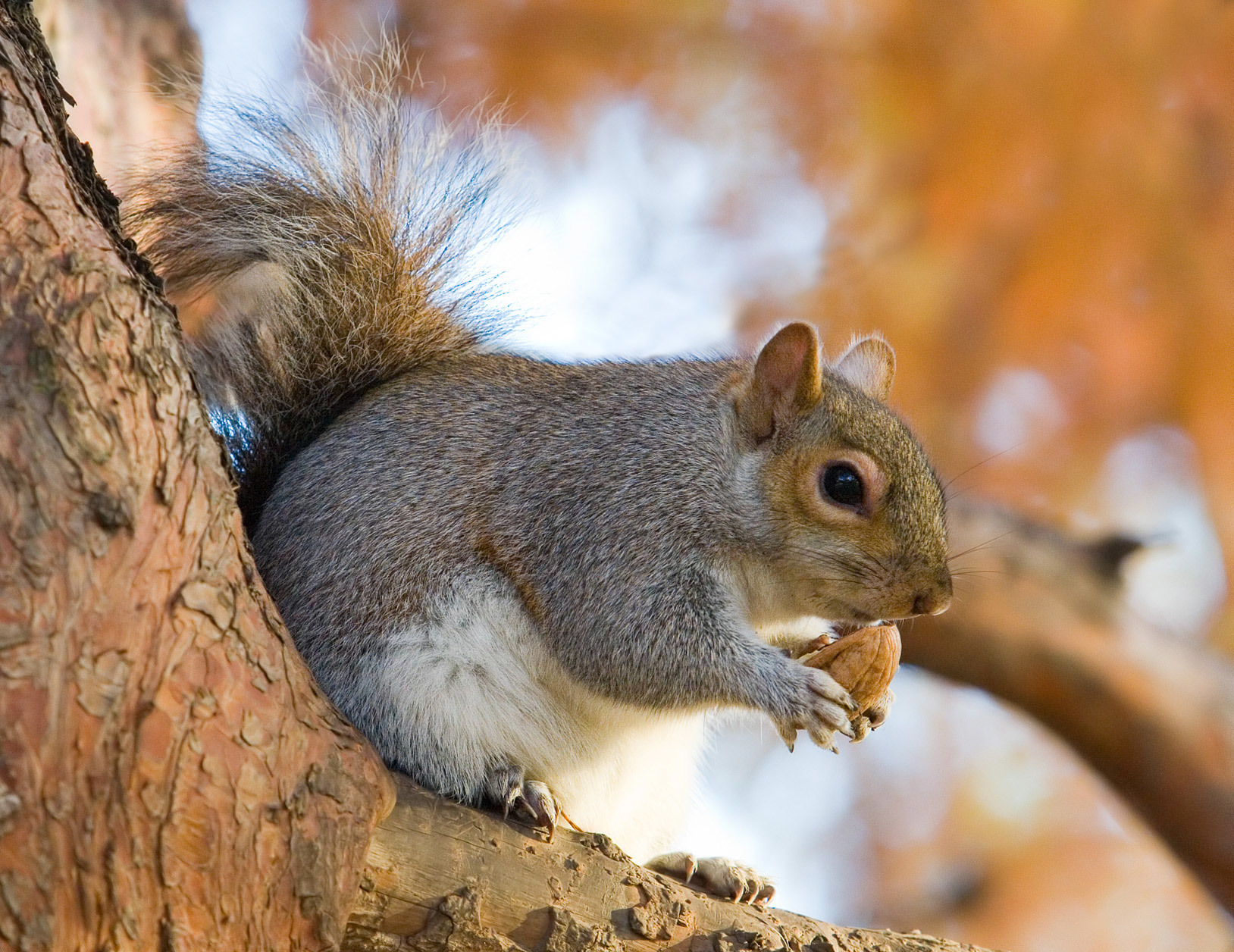
The Eastern Gray Squirrel is the most common and widespread squirrel species in Ohio. It is easily identified by its predominantly gray fur, which often has flecks of brown, and its white or pale underbelly. One of its most striking features is its large, bushy tail, which helps with balance and thermoregulation. While most individuals are gray, melanistic (black) color variants are also frequently seen, especially in urban areas.
This medium-sized tree squirrel typically measures between 16 to 20 inches in total length, including a tail that can reach up to 10 inches. Adults usually weigh between 1 and 1.5 pounds. They have strong, sharp claws for climbing and large hind legs that allow them to leap impressive distances between trees. Their keen eyesight and agile movements make them well-adapted to life in the forest canopy.
Eastern Gray Squirrels are diurnal and highly active during the early morning and late afternoon. Their diet is primarily made up of acorns, hickory nuts, walnuts, seeds, and various fruits, though they occasionally eat insects, bird eggs, and fungi. They are known for their food-hoarding behavior, burying nuts in scattered locations to retrieve later during the winter months. They also build leafy nests, known as dreys, high in trees or take over abandoned woodpecker cavities for shelter.
In Ohio, Eastern Gray Squirrels are found in nearly every county and habitat, ranging from rural woodlands to densely populated urban parks and neighborhoods. They thrive in deciduous forests where oak and hickory trees are present, and they are especially abundant in areas with abundant tree cover and access to reliable food sources. Their adaptability to human environments has helped them maintain stable populations across the state.
Fox Squirrel (Sciurus niger)
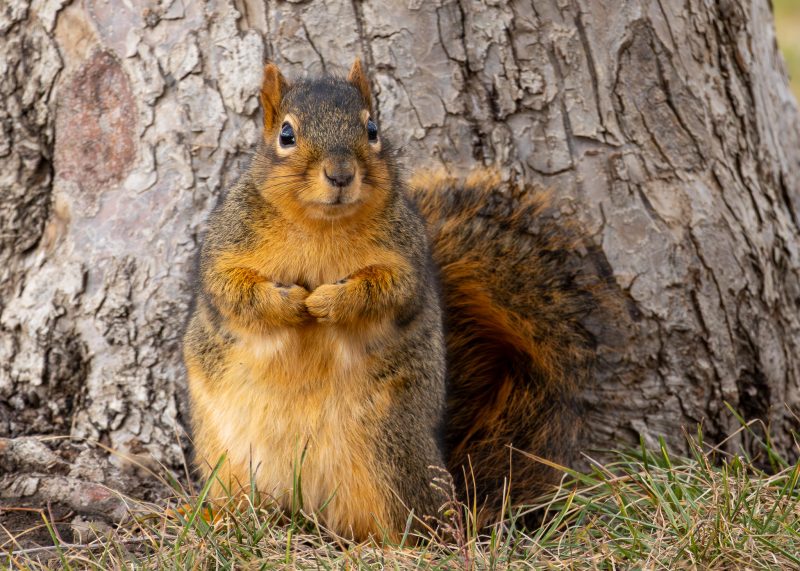
The Fox Squirrel is the largest species of tree squirrel found in Ohio and is notable for its warm, reddish-brown fur and bushy, orange-tinted tail. Its fur can vary slightly from region to region, with some individuals appearing more gray or brown, but the overall appearance is generally brighter and more robust than that of the Eastern Gray Squirrel. The name “Fox Squirrel” comes from the species’ resemblance in color to a red fox.
Adults can reach a total length of up to 27 inches, including a tail that averages about 11 to 13 inches long. They typically weigh between 1.5 to 2.5 pounds, making them significantly bulkier than other tree squirrels. Despite their size, Fox Squirrels are strong climbers and can be surprisingly agile, although they spend more time foraging on the ground compared to other species. Their large body and slow, deliberate movements make them easier to observe in open habitats.
Fox Squirrels are solitary and diurnal, active mainly during the early hours of the day. They feed on a variety of foods including acorns, corn, walnuts, seeds, fungi, and buds. In rural and agricultural settings, they often raid cornfields and gardens. Like their gray cousins, they store food in caches during the fall for winter consumption. They typically nest in tree cavities or construct large dreys in the forks of tall trees, using leaves, twigs, and moss.
In Ohio, Fox Squirrels are most commonly found in the western and central parts of the state, especially in open woodlands, edges of forests, farmland, and even suburban areas with large trees. They favor environments where trees are spaced apart, such as oak savannas or groves, and are commonly seen along woodland edges and in agricultural landscapes. Their ability to thrive in open spaces distinguishes them from more forest-dependent squirrel species.
Red Squirrel (Tamiasciurus hudsonicus)

The Red Squirrel is a much smaller and more vocal squirrel species that resides in Ohio’s northern and eastern woodlands. It is easily recognized by its reddish-brown fur, contrasting white underparts, and a distinctive white ring around its eyes. Its bushy tail is slightly less full than that of larger squirrels, but still prominent. Red Squirrels have a bold and energetic demeanor and are often heard before they are seen, due to their high-pitched chattering calls.
These squirrels typically measure about 11 to 13 inches in length, including a tail of 4 to 5 inches, and weigh only 7 to 10 ounces. Despite their small size, they are fast, territorial, and highly active. Their agility allows them to maneuver quickly through coniferous tree canopies, where they spend much of their time foraging and defending their territory. During the colder months, they remain active and are often seen dashing through the snow.
Red Squirrels have a specialized diet that includes conifer seeds, especially from spruce and pine cones, as well as mushrooms, berries, and occasionally bird eggs or insects. They are known for creating large caches of food near their nests, called middens, which are piles of discarded cone scales and other debris. Unlike gray or fox squirrels, they are highly territorial and will chase away intruders from their feeding areas.
In Ohio, Red Squirrels are primarily found in the northeastern part of the state, where coniferous and mixed forests provide the evergreen trees they prefer. They are less common in the central and southern regions, where deciduous forests dominate. Their presence is closely tied to the availability of conifer seeds, and they are more frequently encountered in state parks, forest preserves, and areas with spruce, fir, or pine plantings.
Southern Flying Squirrel (Glaucomys volans)
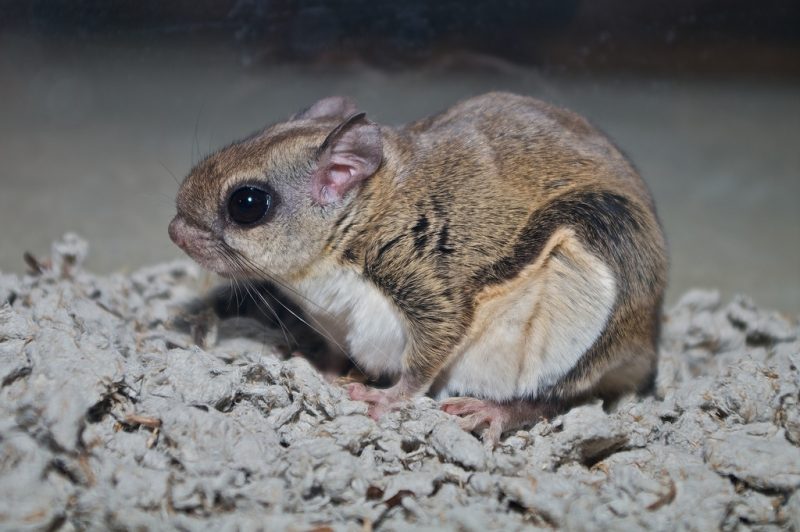
The Southern Flying Squirrel is Ohio’s smallest and most elusive squirrel species, known for its nocturnal habits and remarkable ability to glide through the air. It has soft, silky grayish-brown fur on its back and a white belly, with large, dark eyes adapted for night vision. The most distinctive feature of this squirrel is the patagium, a fold of skin that stretches between its front and back legs, allowing it to glide between trees in search of food or to escape predators.
This tiny squirrel measures just 8 to 10 inches in total length, with a tail that makes up about half of its body. Adults typically weigh between 2 to 3 ounces. Their gliding ability enables them to cover distances of up to 100 feet in a single leap. Unlike other tree squirrels, Southern Flying Squirrels are active only at night and are rarely seen unless specifically sought out using red lights or night-vision tools.
They feed on a varied diet that includes acorns, hickory nuts, seeds, fungi, insects, and occasionally bird eggs or nestlings. During the colder months, they gather in communal nests to share body heat, sometimes with more than 20 individuals in a single cavity. They build nests in tree holes, abandoned woodpecker cavities, or attics when living near human structures.
In Ohio, Southern Flying Squirrels are widely distributed throughout the state, especially in mature deciduous forests with abundant nut-producing trees like oak, beech, and hickory. Although they are common, their nocturnal lifestyle and quiet movements make them difficult to detect. They are more likely to be present than noticed, making them one of Ohio’s most overlooked yet widespread squirrel species.
Northern Flying Squirrel (Glaucomys sabrinus)
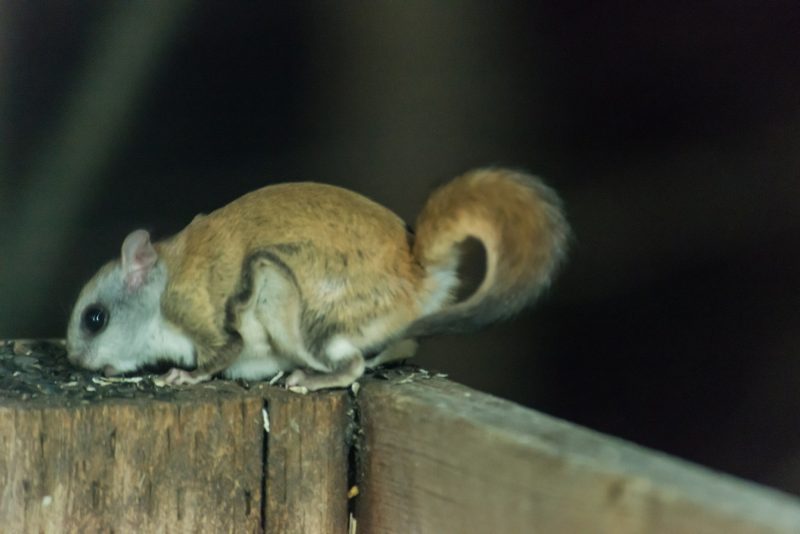
The Northern Flying Squirrel is closely related to the Southern Flying Squirrel but is slightly larger and more cold-adapted. It has soft, dense brownish-gray fur on its back, a pale belly with a slight gray wash (as opposed to pure white in the southern species), and a long, flattened tail. Like all flying squirrels, it possesses a skin membrane called the patagium that stretches between its limbs, allowing it to glide silently through the forest canopy.
This squirrel typically measures between 9 and 12 inches in length, including its tail, and weighs around 3 to 5 ounces. It has large black eyes adapted for night vision and is strictly nocturnal. Its movements are rarely detected during daylight hours, and its gliding abilities allow it to cover impressive distances between trees, especially in mature, unfragmented forest habitats.
Northern Flying Squirrels feed on a variety of foods, including nuts, seeds, fungi, insects, lichen, and even bird eggs. They are especially known for their consumption of truffle-like fungi, which they help disperse throughout the forest. Social in cold months, these squirrels often share nesting cavities to stay warm. They rely heavily on old-growth forests with plenty of standing dead trees and tree cavities for nesting and shelter.
In Ohio, the Northern Flying Squirrel is rare and primarily found in the northeastern part of the state, particularly in cool, moist hemlock-hardwood forests. Its presence is considered a sign of forest health, and it has become increasingly uncommon due to habitat fragmentation. Conservation efforts aim to protect the remaining populations by preserving mature forests and managing forest ecosystems that support their specific habitat needs.
Thirteen-lined Ground Squirrel (Ictidomys tridecemlineatus)
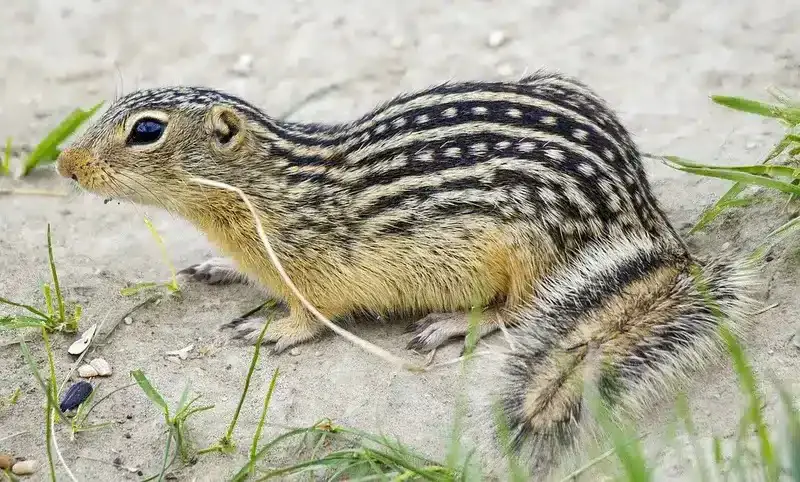
The Thirteen-lined Ground Squirrel is a small, slender burrowing rodent known for its striking appearance. Its body is covered with tan to light brown fur, marked by 13 alternating light and dark stripes running along its back and sides. These stripes may be dotted and give the squirrel a unique, easily recognizable pattern. It has a short, narrow tail and small, rounded ears.
Adults typically measure 6 to 12 inches in total length, including a 3 to 5-inch tail, and weigh between 5 to 9 ounces. Unlike tree squirrels, the Thirteen-lined Ground Squirrel is strictly terrestrial and spends most of its time on the ground. It is active during the day and often seen sitting upright near its burrow entrance, watching for predators or feeding on nearby grasses and seeds.
These ground squirrels feed on seeds, grasses, insects, and even small vertebrates such as lizards or nestling birds. They dig extensive burrow systems with multiple entrances and chambers for sleeping, storing food, and raising young. They hibernate for nearly half the year, entering torpor in early fall and re-emerging in spring.
In Ohio, the Thirteen-lined Ground Squirrel is rare and localized, mostly found in the western and northwestern portions of the state. It prefers dry, open grasslands, prairies, and lightly grazed pastures. Habitat loss due to agriculture and development has limited its range, and it is now considered of special conservation concern in Ohio.
Eastern Chipmunk (Tamias striatus)

The Eastern Chipmunk is one of the most familiar small mammals in Ohio, often seen darting along forest floors or rustling through fallen leaves. It has a reddish-brown back with five dark brown stripes and two pale stripes running down each side, as well as white underparts. Its puffy cheeks are often stuffed with food, especially during autumn.
Measuring about 8 to 10 inches in total length, including a 3 to 4-inch tail, and weighing 2.5 to 5 ounces, the Eastern Chipmunk is smaller than most other squirrel species. It has large black eyes and a relatively short, bushy tail. This species is very agile on the ground and is a skilled climber, though it spends most of its time at ground level or in low shrubs.
Eastern Chipmunks are diurnal and solitary, except during breeding season. They eat a wide variety of foods, including acorns, seeds, fruits, mushrooms, and insects. They create complex underground burrow systems with multiple chambers and escape tunnels, where they store food and hibernate during the coldest parts of winter. Though they may emerge occasionally in winter, they remain largely inactive during cold months.
In Ohio, Eastern Chipmunks are found throughout the state in wooded areas, forest edges, suburban yards, gardens, and parks. They are extremely adaptable and often live near human dwellings, where bird feeders and gardens provide ample food. Their vocal “chip-chip” calls are frequently heard in wooded areas, especially when they sense danger.
Woodchuck (Marmota monax)
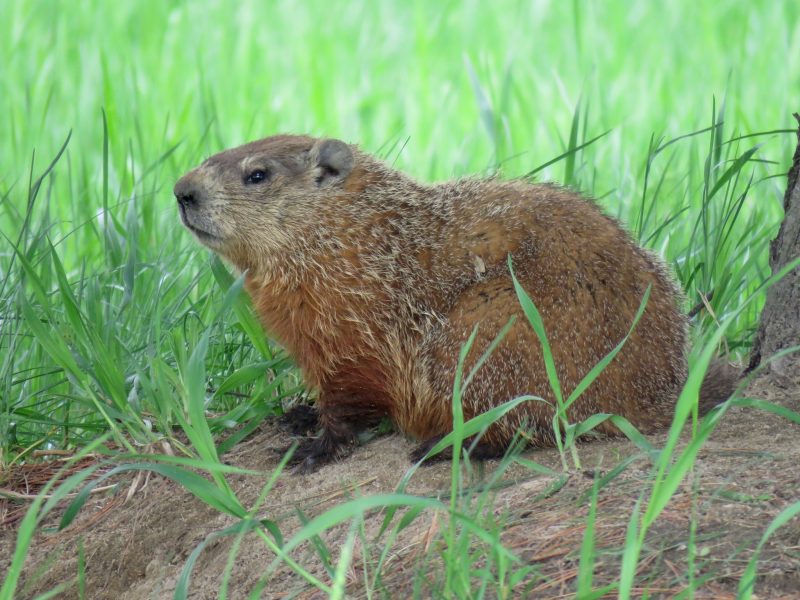
Also known as the groundhog, the Woodchuck is Ohio’s largest ground-dwelling squirrel species and a member of the marmot family. It has a stocky body covered in coarse brown to grayish-brown fur, with short, powerful limbs and a short, bushy tail. Its broad, flattened head and chisel-like incisors are adapted for digging and chewing tough vegetation.
Woodchucks typically measure 16 to 27 inches in length, including a 6 to 7-inch tail, and weigh between 5 to 12 pounds depending on the season. They are excellent diggers and construct elaborate burrow systems that may include multiple entrances, sleeping chambers, and nursery areas. These burrows also serve as hibernation dens during winter.
Primarily herbivorous, Woodchucks feed on grasses, clover, wildflowers, garden vegetables, and sometimes tree bark. They are diurnal and tend to be most active in the early morning and late afternoon. They hibernate deeply from late fall to early spring and can emerge in late winter, which is why they are associated with Groundhog Day.
In Ohio, Woodchucks are common throughout the state and inhabit a wide range of open habitats, including fields, pastures, woodland edges, roadsides, and suburban areas. While they can be beneficial for soil aeration, they are sometimes considered pests due to the damage they cause to crops, gardens, and structures when burrowing under buildings or fences.




